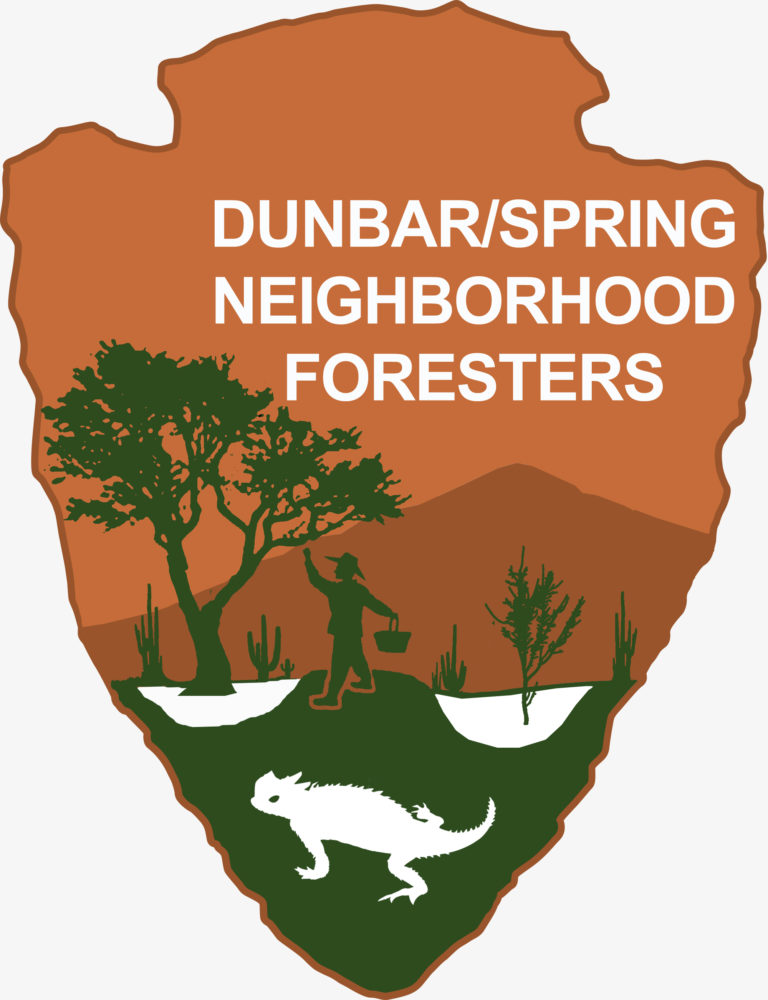
The early logo above, and the Neighborhood Foresters project was inspired in part by the following:
- The Tenderloin National Forest in the Tenderloin neighborhood of San Francisco that created a National (Neighborhood) Forest and thriving community hub of art and activism, which began with the planting of a redwood tree in a formally trash-infested dead-end urban alley.
- Neighborhood elder Willie Fears who recounted that as a child in the middle of summer she could walk barefoot from the Dunbar/Spring Neighborhood to downtown Tucson thanks to the shade of (now-gone) street trees shading the whole route.
We are working to regrow that footpath forest, but this time with hardier native trees, and irrigating them not with costly municipal water, but instead with free rainwater and street runoff. - Eco-village designer Max Lindegger’s story of walking with his grandfather in foothills just outside the family’s village in the Swiss Alps when his grandfather stopped to point out the section of once public or commons forest that was being bladed to build condominums, and said, “Max, that forest is where we got much of what we needed to survive during the war. Where will get what we need in the next catastrophe?”
Max then asked us (students in his eco-village design course), “Where will you get what you need in the next catastrophe in your community? Where are your commons? Where is your public forest?
Realizing I was in a downtown urban neighborhood no where near foothills or forest, I searched. There were no longer forests, but there was ample public space in the form of hot, barren streets and dirt walkways; treeless school grounds and parking lots; and a monocultured park of turf. We could regrow the forests—selecting indigenous plants from our region’s rich ethnobotanical history to provide food, medicine, wildlife habitat, livestock fodder, shade, beauty, fragrance, fiber, dyes, and much more. And the stormwater runoff from the streets, walkways, and parking lots could provide the needed water if captured. - Stella Tucker, steward of her Tohono O’odham family’s seasonal saguaro fruit harvesting camp & grounds and Clifford Pablo, traditional runoff farmer and co-founder of the mesquite pod growing and harvesting program at San Xavier Farm Cooperative. Both taught us to see and help care for the natural bounty which has always surrounded us, but which we all too often don’t see or ignore.
- The David Omick and Pearl Mast along with the Cascabel Conservation Association’s annual mesquite pod millings, mesquite pancake and waffle breakfasts, and native foods pot lucks.
These enabled us to participate in the processing and enjoyment of locally-grown and harvested native foods – teaching us as we relished the delicious flavors and community. - Neighbor Robert Redding who commented, “There seems to be a higher density of desert ironwood trees (planted by neighbors) in our neighborhood than there are in the Ironwood National Monument. We should be an urban neighborhood-based satellite forest of that Monument!”
